How to Aim a Gun
Russ Chastain 03.15.18
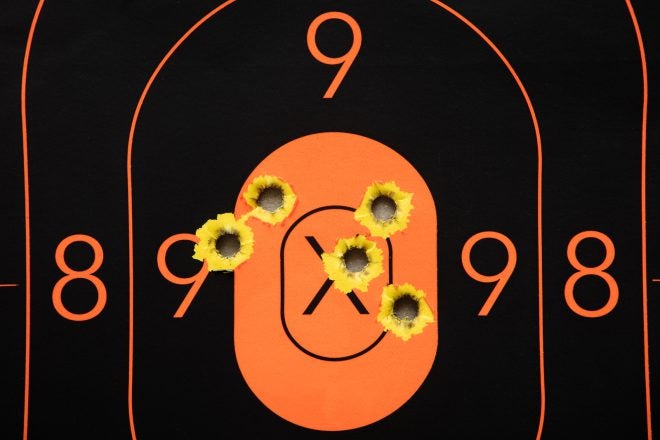
Shooting is fun — but it’s a lot more fun when you can hit your target. So let’s talk a little about aiming.
First, take a few minutes to review these basic gun safety rules. Then let’s get right to it.
Different Types of Gun Sights
There are numerous ways to aim a gun. Most guns have open sights, consisting of a rear sight with a notch and front sight with a bead or blade. Some rear sights have holes; those are peep sights (sometimes called aperture or “ghost ring” sights).
Then there are optical sights such as scopes or red dots. These are add-on sights with optical glass, with or without magnification, which contain some sort of aiming point within; either a physical dot or crosshair or an electronically-produced image such as a red dot.
Aiming with Optical Sights
Let’s start here, because optical sights are the easiest to use.
When you look through the sight, you should have a nice clear view. You don’t want to see any blackness around the edges. If you do, try moving the scope or your eye closer or farther, or side to side until you get a nice clear view. You want your aiming point (crosshair, red dot, etc) to be in the center. Ideally, the aiming point and the target should both be in focus.
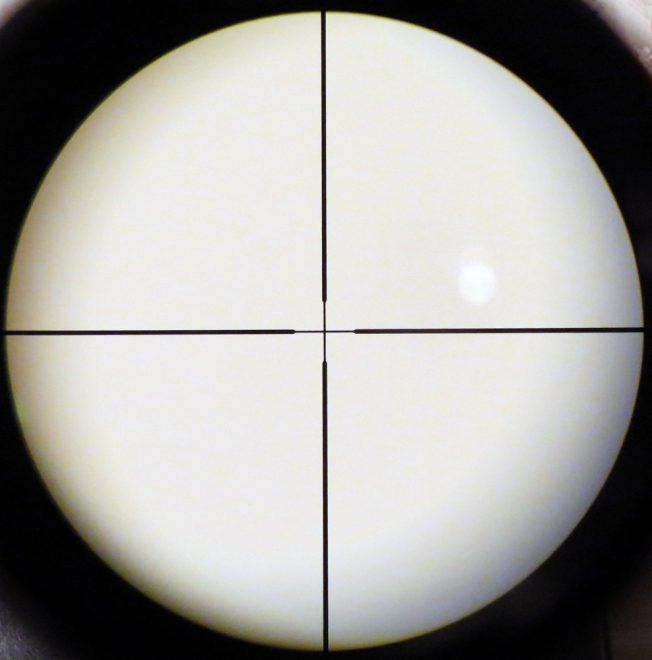
With a conventional scope, you will have a reticle, most often a crosshair. If you have a simple cross or +, your aiming point is the center of the + where the two lines intersect. If you have a dot or circle in the center of the reticle, your aiming point is the center of that circle or dot.
With red dot or holographic sights, the center of the dot, ring, X, or whatever, is your aiming point.
Simply find your target, cover it with the aiming point of your optic, and squeeze the trigger while holding a nice and steady aim. Super simple.
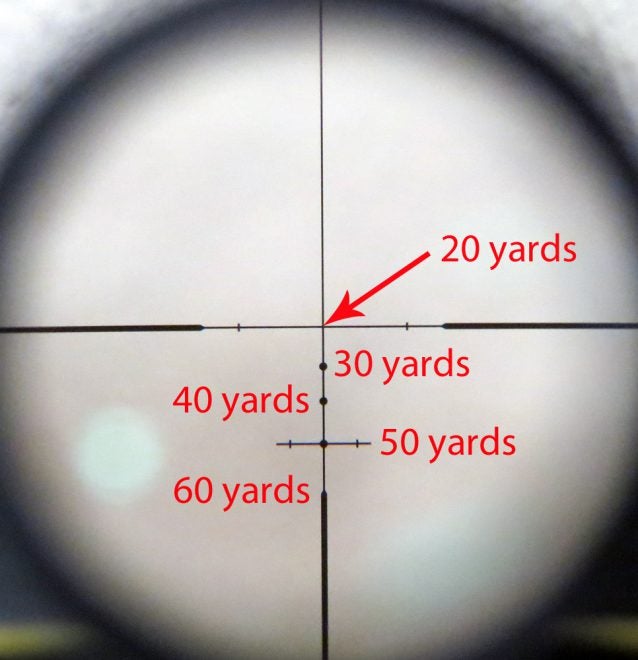
Aiming with Open Sights
Open sights are also simple, but involve more parts and a bit more eyeball flexibility. Line up the front sight in the notch of your rear sight, keeping the front sight centered in the notch and keeping the top of the front sight even with the rear sight.
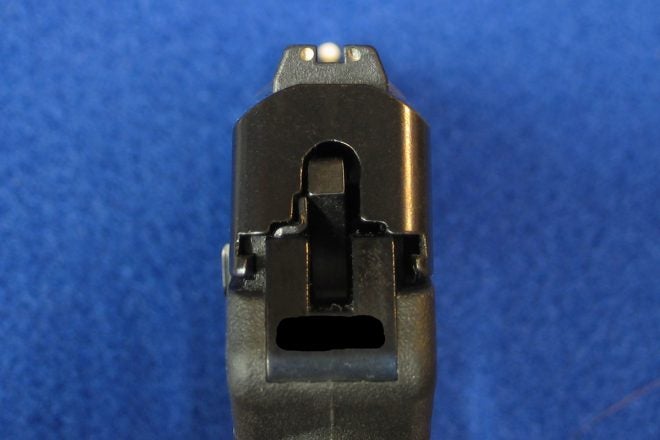
If you have a bead-style front sight, it will look like a circle or ball when viewed from behind. The rear sight in this setup will usually have a rounded notch instead of a square one. For proper sight alignment for these, simply allow that round front sight to settle in the curved rear notch in the same way a ball might settle in a dip or depression in the ground.
I prefer my bullet to strike just at the top edge of the front sight. This known as a “hunting sight picture.” Some shooters prefer to use a “six o’clock hold,” in which they place the top edge of the sights at the bottom of a round target bullseye. To me, this is just too imprecise.
Aiming with Peep Sights
When it comes to iron sights, peep sights are the fastest, easiest, and often the most accurate.
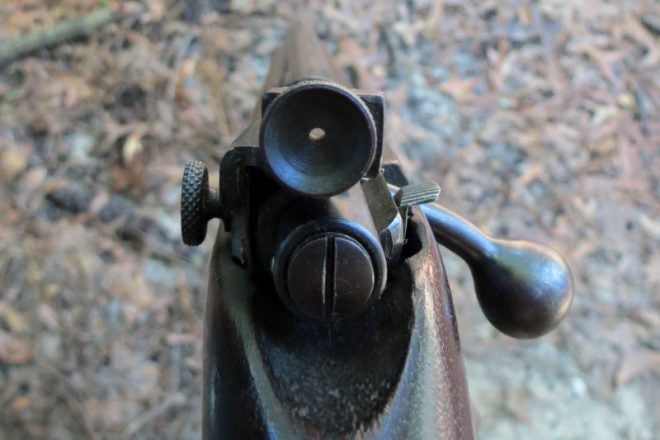
When you look through the hole or aperture in a peep sight and look at the front sight and your target beyond, you will almost always automatically center that front sight in the center of the aperture. Most of the time, you don’t even have to think about it; it just happens. Using a peep sight is almost as easy as aiming with a scope, and it’s usually faster.
Simply look through the peep, place the front sight on your target, and fire. As with open sights, I prefer to adjust them so the bullet’s point of impact on target will coincide with the top edge of the front sight.
Some Aiming Tips
Unlike with optical sights, it’s impossible to aim with iron sights while keeping your sights and the target in focus at the same time. Your eye must adjust back and forth rapidly to ensure the sights are aligned and that you’re on target. Your best bet is to concentrate most on the front sight. This is easier with a peep sight than open sights, but remember that if the front sight isn’t on target, you’re definitely going to miss, even if your sight alignment is perfect.
Conclusion
That’s about it, really. It takes some practice, but it’s well worth the effort to learn how to aim with any and all sorts of gun sights. I suggest starting out with iron sights and only moving to optics after you master them.
Happy shooting!